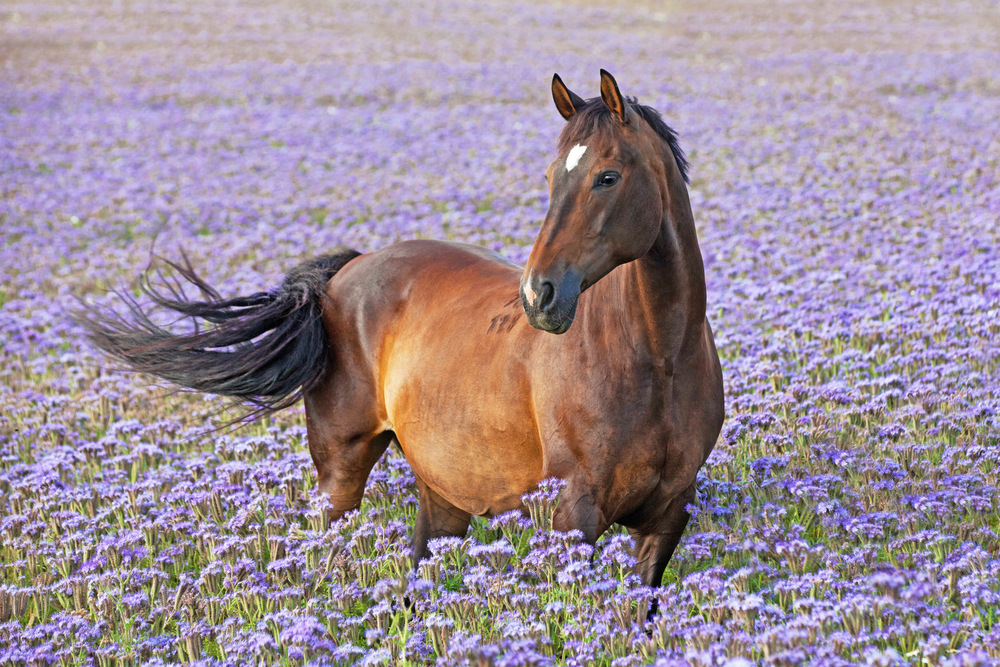How Long Do Horses Live? And Other Fun Facts
Posted on Categories Discover Magazine

Old Billy was a draft horse, probably a Shire, who lived and worked in England in the late eighteenth and early nineteenth centuries. He was 62 years old when he died.
In those days, that was a pretty advanced age for a human; for a horse, it was remarkable. It’s thought that Old Billy is the longest-lived horse on record.
How Long Do Horses Live?
On average, domesticated horses live 25 to 30 years. Ponies tend to live even longer. (Horses in the wild typically make it only to about 15 years old.) But averages can be deceiving, especially when it comes to the lifespans of animals. A lot depends on where a horse lives and how it is or is not cared for. A horse that gets the best food and veterinary care may live beyond 30 years, though it’s unlikely Old Billy’s record will be broken any time soon.
As with dogs, the larger horse breeds, such as draft horses, tend to have shorter lifespans than smaller breeds, such as Arabians. But again, those are tendencies and averages. There is a lot of individual variation, as the example of Old Billy, a draft horse, confirms.
Here are a few more fun facts about these remarkable creatures.
When Were Horses Domesticated?
(Credit:acceptphoto/Shutterstock)
Horses were one of the last animals to be domesticated. Though it’s not entirely clear how long humans and horses have lived and worked together, DNA evidence suggests that horses were domesticated between 4,000 and 5,000 years ago in the area between the Black Sea and the Caspian Sea.
Read More: Ancient DNA Illuminates the History of Horses in the Americas
How Do Horses Sleep?
(Credit:Alan Goodwin Photo/Shutterstock)
They sleep standing up, actually. Lying down definitely poses problems for horses. In the wild, they need to be ready to run in case a predator attacks. Quickly leaping to your feet isn’t easy when you weigh upwards of 1,000 pounds. So horses have evolved to catch a few Z’s while standing. It’s definitely the safer approach.
Also, the weight of a horse can put pressure on the lungs and circulatory system when these big animals lie down, so it’s not a good idea for a horse to spend too much time lolling around on the ground.
Horses can sleep on their feet without falling over because of something known as the stay apparatus. This is a complex system of muscles, tendons, and ligaments that allows an animal to remain standing with little effort.
However, this standing sleep is more like napping than sleeping. For deep, rapid eye movement (REM) sleep, horses do lie down. They need only about half an hour a day of REM sleep, though, so the risk is limited.
Can Horses Vomit?
(Credit:CustomPhotographyDesigns/Shutterstock)
No, horses cannot vomit. The sphincter muscles in the lower esophagus of horses are much stronger than those in humans. They’re so strong that any food that tries to come back up won’t get past this one-way valve. We don’t know why horses developed this peculiar anatomy, but some experts speculate that the extra strong sphincter muscles keep horses from vomiting while running.
What Are Baby Horse Hooves Like?
(Credit:Katho Menden/Shutterstock)
Baby horses have fairy slippers. Newborn horses, called foals, are born with soft tissue on their hooves. This protects the mare from sharp little hooves when the foal is in the womb and as it passes through the birth canal. The technical name for the tissue is “eponychium,” but it’s much more fun to call it by one of its popular names: fairy slippers or horse feathers.
Are There Still Wild Horses?
(Credit:Alexey Kharitonov/Shutterstock)
Wild horses in the U.S. aren’t truly wild but feral — that is, they live in the wild but are descended from domesticated ancestors. The only truly wild horses still in the world are Przewalski’s horses, though some recent research suggests that they, too, may be feral, having descended from horses that were at least partially domesticated. (Przewalski’s horses live in Mongolia, China, and Kazakhstan.)
Read More: 20 Things You Didn’t Know About Horses